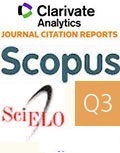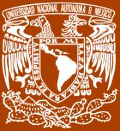Machine learning and magnetic parameters to monitor potentially toxic elements in urban road dust of Mexico City
Aprendizaje automatizado y parámetros magnéticos para monitorear elementos potencialmente tóxicos en polvo de vialidades urbanas de la Ciudad de México
Ruben Cejudo1,*, Francisco Bautista Zuñiga2, Jaime Urrutia-Fucugauchi3, Avto Goguitchaichvili1, Vadim Kravchinsky4, Patricia Quintana Owen5, Daniel Aguilar6
1 Instituto de Geofísica-UNAM campus Morelia, Antigua Carretera a Pátzcuaro 8701 Col. San José de la Huerta C.P 58190, Morelia, Mexico.
2 Centro de Investigaciones en Geografía Ambiental-UNAM campus Morelia, Antigua Carretera a Pátzcuaro 8701, Col. San José de la Huerta C.P 58190, Morelia, Mexico.
3 Instituto de Geofísica-UNAM, Circuito de la Investigación Científica s/n, Ciudad Universitaria, Alcaldía Coyoacán. C.P. 04510. Ciudad de México.
4 Department of Physics, University of Alberta, Edmonton, Alberta, Canada T6G 2E1.
5 CINVESTAV Mérida, Km. 6 Antigua carretera a Progreso Apdo. Postal 73, Cordemex, 97310, Mérida, Yuc., México.
Corresponding author: (R. Cejudo) This email address is being protected from spambots. You need JavaScript enabled to view it.
How to cite this article:
Cejudo, R., Bautista Zuñiga, F., UrrutiaFucugauchi, J., Goguitchaichvili A., Kravchinsky, V., Quintana Owen, P., Aguilar, D., 2024, Machine learning and magnetic parameters to monitor potentially toxic elements in urban road dust of Mexico City: Boletín de la Sociedad Geológica Mexicana, 76 (3), A290224. http://dx.doi.org/10.18268/BSGM2024v76n3a290224
Manuscript received: October 26, 2023; corrected manuscript received: February 20, 2024; manuscript accepted: February 28, 2024.
ABSTRACT
The high concentration of potentially toxic elements in urban road dust has been commonly associated with serious health problems. However, there is no systematic method for monitoring toxic elements in road dust of metropolitan areas. Here we develop a mathematical model based on machine learning algorithms using magnetic parameters (specific susceptibility, frequency-dependent susceptibility and saturation isothermal remanent magnetization) for proxy monitoring of toxic elements. Machine learning algorithms included artificial neural networks, classification trees and linear regression model in order to analyse up to 140 urban road dust samples collected in the metropolitan area of Mexico City. The study is intended to determine their ability to predict the concentrations of chromium, copper, lead, vanadium and zinc in urban road dust and evaluate the pollutant load index. We found that the algorithm based on artificial neural networks is a 20% better estimator of the concentration of toxic elements, compared to the decision tree and multiple linear regression models. The use of mathematical models based on neural networks and magnetic parameters is proposed to design a proxy monitoring system for potentially toxic elements in urban road dust.
Keywords: pollution load index artificial neural network, magnetic parameters, urban road dust, Mexico City.

